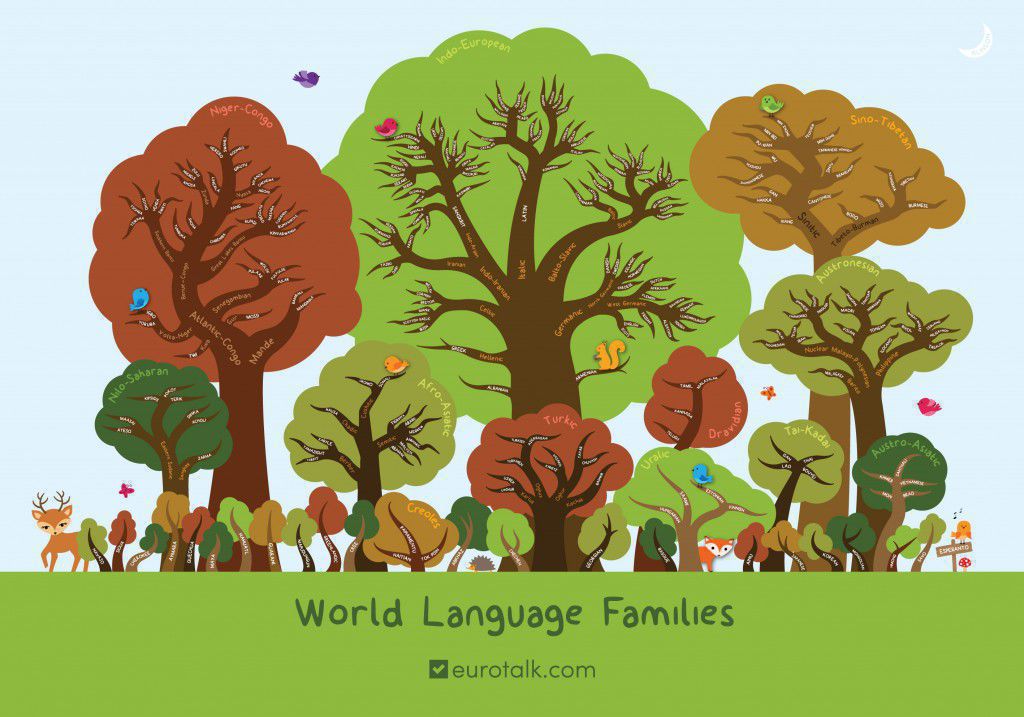Have you ever wondered how different languages in the world are related to each other? Some of the answers may be surprising…
Did you know, for example, that the Finnish language isn’t directly related to Danish or Norwegian? It’s actually a Uralic language, in the same family as Hungarian and Estonian, whereas the others are North Germanic.
Or that Korean and Basque are two examples of a language isolate, which means they’re not related to any other language in the world?
According to Ethnologue, the Indo-European language family has the most speakers (2.9m), although the Niger-Congo family includes the most languages (1,524).
To find out more, check out our forest of language family trees below. Please click on the image to make it bigger and have a good look around; you may well discover languages you never knew existed…
(Please note: the forest doesn’t include every language in the world; it would have been difficult to fit all 6,000+ in! So if we’ve missed off your language, we’re really sorry and hope you’ll forgive us.)
 If you’d like to share the image on your own blog or website, you’re more than welcome – please use the embed code below. We also include a free poster-sized copy of the language forest with all our CD-ROM and USB products (available from eurotalk.com), with a world language map on the reverse.
If you’d like to share the image on your own blog or website, you’re more than welcome – please use the embed code below. We also include a free poster-sized copy of the language forest with all our CD-ROM and USB products (available from eurotalk.com), with a world language map on the reverse.
We hope you enjoy exploring the language forest 🙂
2 thoughts on “The Language Forest: how are world languages related?”